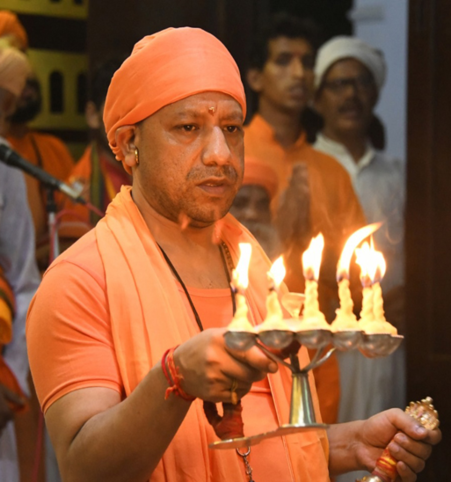The Story of Gorakhnath Math
The Story of Gorakhnath Math
Gorakhnath Math, a revered Hindu temple located in Gorakhpur, Uttar Pradesh. Spanning an impressive 52 acres, this temple is not just a religious site; it's a cultural hub with a rich history and a significant role in Indian spirituality and politics.
WHO WAS GORAKHNATH?

The name Gorakhnath comes from the medieval saint Gorakshanath, who lived around the 11th century CE. He was a yogi and a central figure in the Nath tradition, which focuses on meditation and spirituality. Gorakhnath traveled extensively across India, sharing his teachings and leaving behind many texts that are still important today.
What is the HISTORY OF GORAKHPUR?
Gorakhpur itself is named after Gorakhnath. The temple stands on the very spot where he practiced his Sādhanā, or meditation. The region was historically significant, being part of ancient kingdoms like Magadha and a center of Hindu culture.
.jpg1726901303.jpg)
Gorakhnath Math in Gorakhpur, Uttar Pradesh, is a significant pilgrimage site, especially during festivals like Makar Sankranti, attracting thousands of devotees. The 52-acre complex features halls for various deities, Gorakhnath’s personal chamber, an eternal flame, and a cow shed honoring his love for cows. The math has a rich political history, with leaders like Mahant Digvijay Nath and Yogi Adityanath, the latter becoming Chief Minister in 2017. Recently, it faced challenges, including a violent incident in 2022, but remains a symbol of spirituality, culture, and political influence in India.
What are the Religious Activities at Gorakhnath Temple?
1. Gorakhnath Temple, Gorakhpur, Uttar Pradesh
Daily Religious Activities:
.jpg1726810859.jpg)
- Aarti (Prayers): Performed several times a day, including early morning (Mangal Aarti) and evening
- (Sh evening aarti). Devotees participate in these rituals by singing hymns and making offerings.
- Meditation: Regular meditation sessions are held for spiritual practice and personal growth.
- Discourses: Spiritual discourses on the teachings of Baba Gorakhnath are delivered by the monks, guiding devotees in their spiritual journey.
What are the Major Festivals?
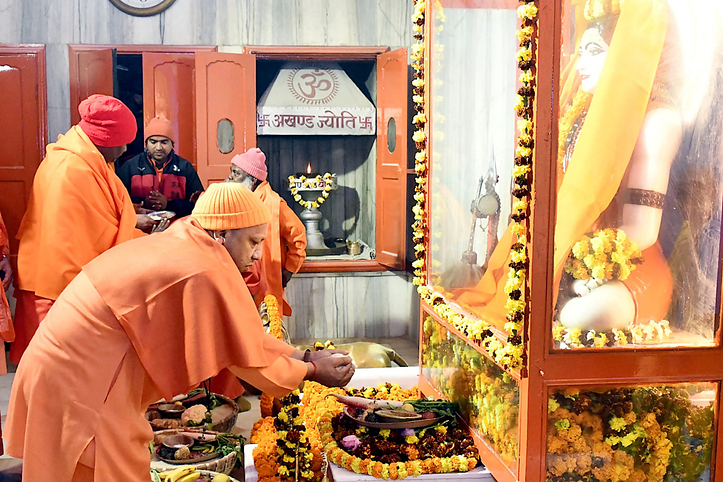
- Makar Sankranti: The festival is celebrated with the Khichdi Mela, where devotees prepare and offer khichdi (a dish of rice and lentils) to Baba Gorakhnath. This festival marks the end of winter and the start of longer days. The King of Nepal has historically visited the temple during this festival, highlighting its importance.
- Guru Purnima: A day dedicated to honoring Baba Gorakhnath. The festival includes special prayers, rituals, and community events.
- Maha Shivaratri: Celebrated with special offerings and prayers to Lord Shiva, emphasizing the connection between Nath traditions and Shiva worship.
- Navaratri, Diwali, Holi: Major Hindu festivals are celebrated with traditional rituals, decorations, music, dance, and community feasts.
What are the Special Ceremonies?
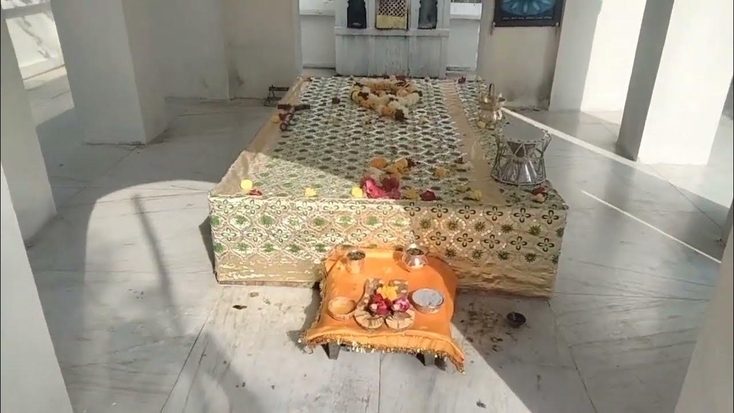
- Samadhi Ceremonies: Held for deceased Mahants (chief priests) to honor their contributions and spiritual leadership. For example, the samadhi of Mahant Avaidyanath in 2014 was a significant event.
- Community Engagement: Devotional Songs: Regular bhajans (devotional songs) are sung, praising Baba Gorakhnath and expressing devotion.
- Pooja (Worship): Daily worship rituals and special poojas during festivals foster a sense of community and spiritual devotion.
2. Gorakhnath Temple, Gorkha, Nepal
.jpg1726898659.jpg)
What are the Daily Religious Activities?

- Aarti (Prayers): Similar to Gorakhpur, daily aarti is conducted, involving hymns and offerings to Baba Gorakhnath.
- Meditation: Meditation practices are held, focusing on spiritual growth and inner peace.
- Discourses: Teachings and discourses based on Baba Gorakhnath’s philosophy are delivered to guide devotees.
What are the Major Festivals?
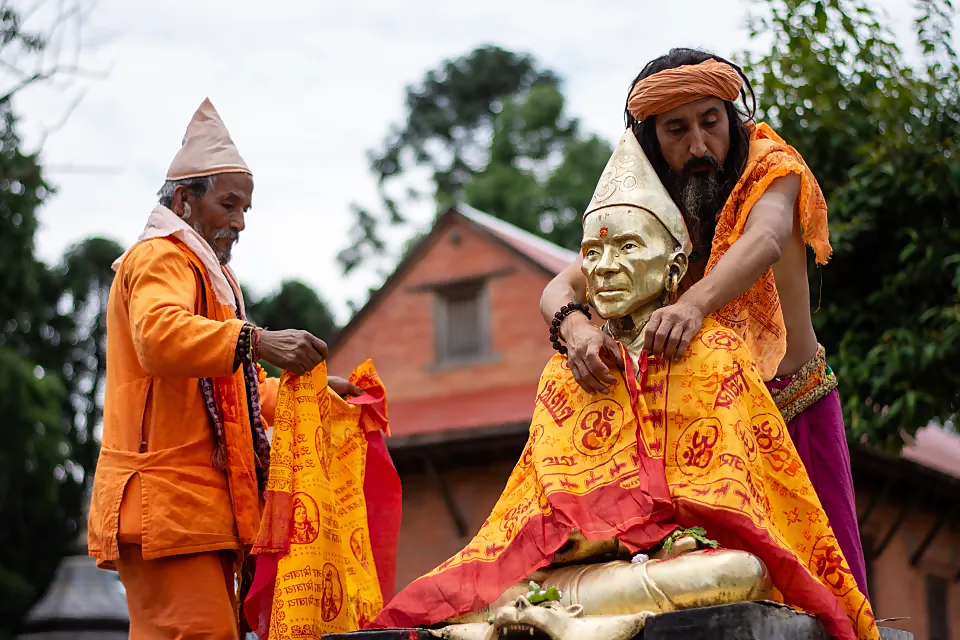
- Makar Sankranti: Celebrated with local customs and rituals, highlighting the festival's significance in the Nath tradition and its cultural connection with Gorkha.
- Guru Purnima: Observed with prayers and rituals dedicated to Baba Gorakhnath, reinforcing the spiritual teachings.
- Maha Shivaratri: Celebrated with offerings and prayers, reflecting the Nath tradition’s reverence for Lord Shiva.
What are the Special Ceremonies?
- Rituals and Poojas: Daily worship and special ceremonies honor Baba Gorakhnath, maintaining the temple’s spiritual practices.
- Community Engagement: Devotional Songs: Local hymns and songs celebrate Baba Gorakhnath’s life and teachings.
- Festive Gatherings: Community events and celebrations during major festivals foster spiritual and cultural connections.
The King of Nepal's visits during Makar Sankranti specifically highlight the Gorakhnath Temple in Gorakhpur, emphasizing its prominence as a central site for Gorakhnath Math's religious and cultural activities. Both temples, in Gorakhpur and Gorkha, play crucial roles in preserving and promoting the Nath tradition, with various rituals, festivals, and community engagements that reflect their spiritual significance.
Who were the important Mahants of Gorakhnath Math?
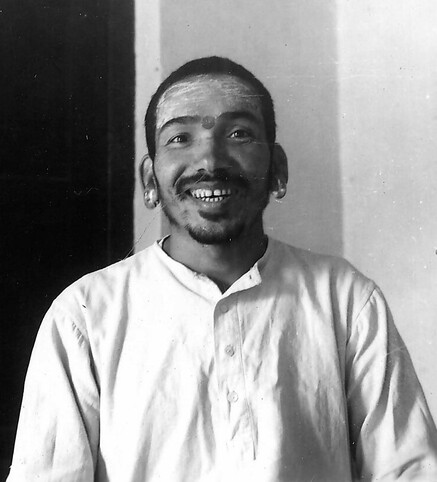
Yogi Naraharinath
Personal Details:
- Born: 28 February 1915 (Bikram Samvat: 17th Falgun 1971) in Kalikot District (now Karnali Province), Nepal.
- Original Name: Balbir Singh Hriksen Thapa.
- Parents: Lalit Singh Hriksen Thapa and Gauri Devi.
- Clan: Khas clan of Hriksen Thapa Chhetri, Bhardwaj Gotra.
Early Life and Education:
- Upanayana Ceremony: Performed at age eight.
- Sannyasa: Took at Chandannath Temple, Jumla District; named Yogi Naraharinath by his guru.
- Education: Enrolled at Vatukbhairavanath Siddha Chandannath Bhasha Pathshala in Jumla at age nine. Later learned Sanskrit in India.
- Residence: Resided at Mrigasthali, Kathmandu, near Pashupatinath Temple.
- Books Written: Over 570 books, with 114 published.
- Focus Areas: Collection and decryption of Khas language documents into readable Nepali; genealogies like Gorkha Bansawali, Yogi Bansawali, and Devmala Bansawali.
- Notable Claims: Some claims regarding Victorian King Vikramaditya.
- Contributions: Worked with Nepal Sanskrit University; his works contributed to genealogical studies and historical documentation.
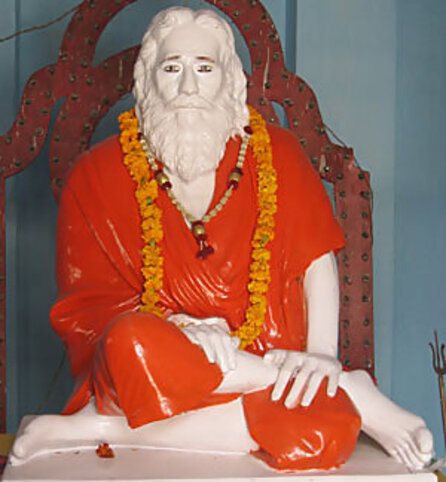
Baba Gambhirnath
Personal Details:
- Affiliation: Indian Hindu saint associated with the Guru Gorakhnath tradition
- Contributions: Known for contributions to yoga and knowledge
- Position: Peethadhishwar (head) of Gorakhnath Math, a Nath monastic order temple
- Reputation: Revered as a great Siddhapurush (perfected being) in the 20th century
- Guru of: Mahant Digvijaynath
- Died: 1917
- Born in a wealthy Kashmiri family.
- Mastered all forms of yoga and studied under Mahant Baba Gopaldas.
- Meditated in various sacred locations.
- Revived Nath Sampradaya yoga principles and gained many disciples, particularly in Bengal.
- Passed away on March 21, 1917, and is commemorated at his Samadhi temple in Gorakhpur.
- A special cover was issued in April 2016 for his centenary.
- Gorakhpur's Ward 5 is named after him.
- The Uttar Pradesh government, led by Chief Minister Yogi Adityanath, established the Yogiraj Baba Gambhirnath Auditorium and Cultural Centre.
- A biography and a chapter in a Hindi textbook honor his legacy.
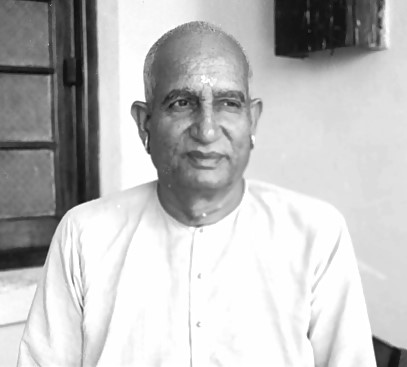
Mahant Digvijaynath
Personal Details:
- Full Name: Swaroop Singh Ranawat (1894–1969)
- Role: Head priest of Gorakhnath Math in Gorakhpur
- Political Involvement: Active Hindu nationalist and le
- ader of the Hindu Mahasabha
- Incidents: Arrested for inciting Hindu passions against Mahatma Gandhi
- Ram Janmabhoomi Movement: Key role in the 1949 movement, leading to the installation of Rama idols inside the Babri Masjid
- Political Career: Elected as the MP for Gorakhpur in 1967 on a Hindu Mahasabha ticke
- Viramdevot Ranawat Rajput family.
- Mother passed away when he was 8 years old.
- Father, Rawat Thakur Uday Singhji, was President of the Mewar Presidency Council.
Early Life and Education:
- Sent to Nath yogi Phulnath and brought to Gorakhnath Math.
- Studied at St. Andrews College, Gorakhpur, where he excelled in sports.
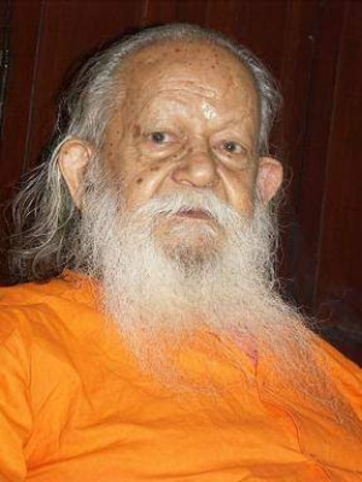
Mahant Avaidyanath
Personal Details:
- Name: Mahant Avaidyanath (born Kripal Singh Bisht)
- Date of Birth: 28 May 1921
- Date of Death: 12 September 2014
- Position: Head Priest (Mahant) of Gorakhnath Math
- Successor: Yogi Adityanath (Ajay Mohan Bisht)
- Date of Death: 12 September 2014
- Tributes:
- Prime Minister Narendra Modi expressed sadness and acknowledged his patriotic zeal and contributions
- Home Minister Rajnath Singh and UP BJP president Laxmikant Bajpai also offered condolences
- Commemoration:
- A stamp was released to mark his first death anniversary.
Yogi Adityanath
Personal Details:
- Full Name: Ajay Mohan Singh Bisht
- Born: 5 June 1972, Panchur, Pauri Garhwal, Uttarakhand
- Position: Chief Minister of Uttar Pradesh since 19 March 2017; longest-serving chief minister and the only one to serve two consecutive terms.
- Family: From a Garhwali Rajput family; father, Anand Singh Bisht, was a forest ranger.
- Education: Completed a bachelor’s degree in mathematics from Hemwati Nandan Bahuguna Garhwal University.
- Mahant of Gorakhnath Math in Gorakhpur since September 2014.
- Founded Hindu Yuva Vahini, a Hindu nationalist group.
- Known for Hindutva nationalist and conservative social views.
Early Life and Education:
- Joined the Ayodhya Ram temple movement in the 1990s and became a disciple of Mahant Avaidyanath.
- Founded a school in his ancestral village in 1998.
- Appointed Mahant of Gorakhnath Math and Peethadhishwar on 14 September 2014, following Avaidyanath’s death.

.jpg1726901303.jpg)
.jpg1726810859.jpg)


.jpg1726898659.jpg)


.jpg1726814615.jpg)




